Microbook II measurements, Part 1
This is the base set of measurements of the MOTU Microbook II. using the measurement protocol described in A simple test protocol for USB/Firewire soundcards.
I’m posting this on this blog now because the full review has been delayed until the December issue. Measurements are performed with FuzzMeasure Pro and the Electroacoustics Toolbox. These are Mac programs but I’m sure there are Windows equivalents.
1. Level calibration
I measured full-scale output on the Microbook is 2.9V RMS (11.4 dBu). The microphone input is the best option for performing loopback tests, as the line input is not driven to full scale with that voltage and (unless I missed something) there is no gain on the line inputs, only attenuation.
The microphone input has a 20 dB pad, which makes it effectively act as a line-level input. With the pad engaged, 18 dB of gain on the input, and the output signal set to 1.0 V RMS, the input signal measured at 0.975 full-scale. Fortunate, as the input gain on the Microbook can only be controlled in 3 dB steps. This is actually just pushing the ADC into clipping, so the measurements below will use the -1 dBV signal level.
2. Frequency response
Frequency response as measured on the mic input, with output signal level set to -10 dB:
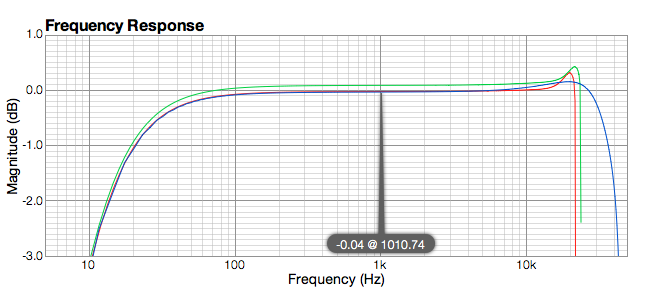
Microbook II Frequency response, Mic In
It’s about a dB down at 20 Hz and at 36 kHz, when operated at 96 kHz.
3. Residual noise
These are the noise levels with no input signal, with the gain set as described above. At 96 kHz, there is a set of very low-level but noticable artifacts at multiples of 2 kHz:
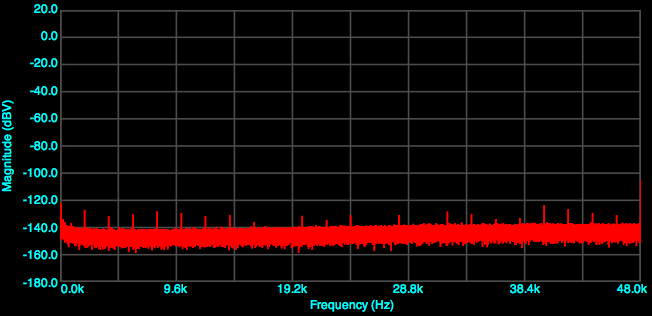
Microbook II noise @ 96 kHz
While at a very low level, these could make things more confusing in later tests when looking for spectral artifacts at multiples of 1 kHz… the noise when operated at 88.2 kHz is probably easier to deal with in that regard, as it’s not at multiples of 2 kHz:

Microbook II residual @ 88.2 kHz
At 44.1 kHz:
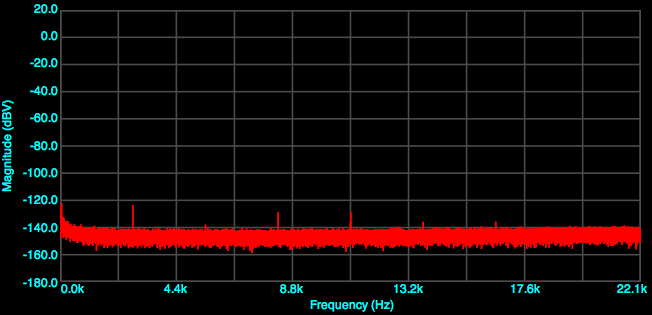
Microbook II residual @ 44.1 kHz
4. Harmonic distortion
Here are the distortion plots with 1 kHz input. At -1 dBV input:

Microbook II harmonic distortion, -1 dBV input
At -20 dBV input, most of the distortion except for the second, and some odd ones higher up, disappear:
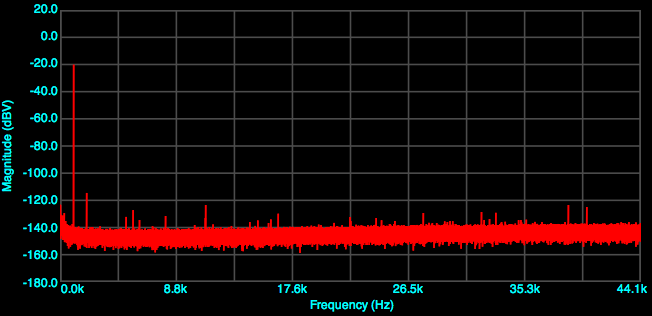
Microbook II harmonic distortion, -20 dBV input
At -1 dBV, the THD is calculated as -103.4 dB, and at -20 dBV, as -93.9 dB. In the latter case, it’s mostly second harmonic. This is excellent performance; compare, for example, with the Edirol UA-25EX measurements.
5. CCIF intermodulation distortion
Here are the plots at -1 dB:
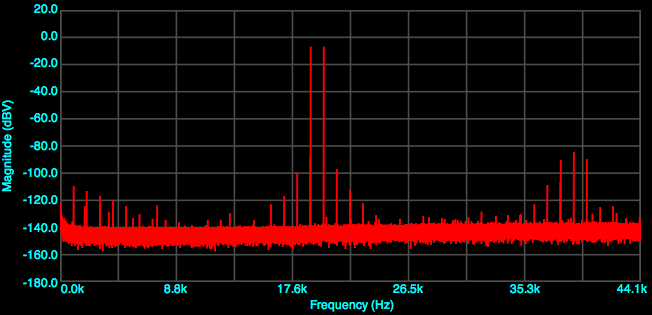
Microbook II CCIF IMD, -1 dBV
At this signal level, the even order components are 100 dB down, and the odd-order components almost 110 dB down.
At a -20 dBV signal level, the odd-order components disappear into the noise:
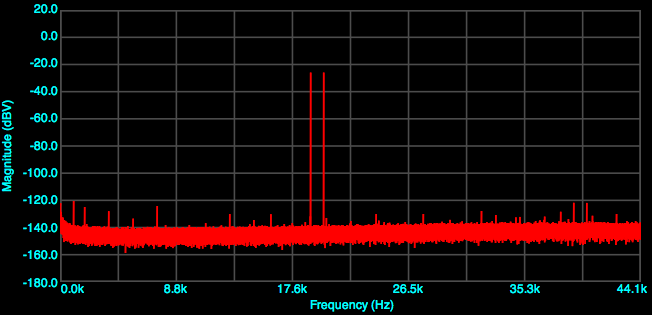
Microbook II CCIF IMD, -20 dBV
6. SMPTE intermodulation distortion
Here is the Microbook II with -1 dBV (peak) signal level:
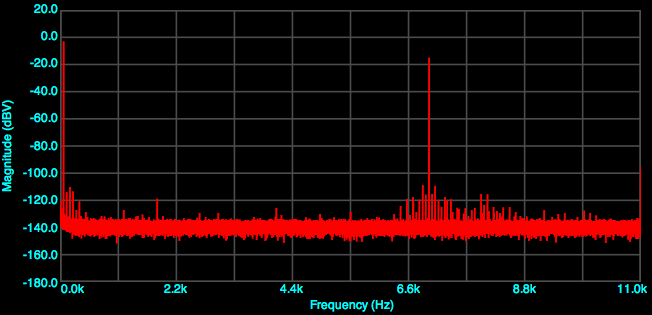
Microbook II SMPTE IMD, -1 dBV
The sidebands are all at least 110 dB down full-scale, or around -95 dB relative to the 7 kHz carrier. I think that could fairly be called excellent. There is no point in putting up the measurement at -20 dBV.
7. Mic input
With the Microbook 2i2, it’s quite simple to set the signal generator to -46 dB out, adjust the input gain, and get a sensible result. Here it is:
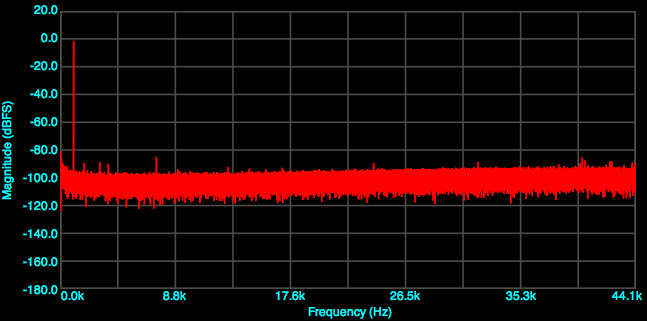
EAT tells me this is -83 dB THD. The result using the DI box has the same THD, with the noise floor a few (4-5) dB lower.
Concluding remarks
The Microbook II offers excellent objective performance for a fairly inexpensive bus-powered device. It’s predictable in its noise and gain behavior, which I like very much. I wasn’t able to get any scary-looking noise gremlins out of it like with the Focusrite Scarlett 2i2.
It’s also a fairly sophisticated device, with a lot of functionality. I’ll have a bit more later (Part II).